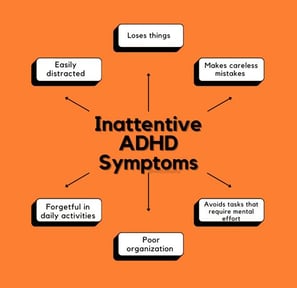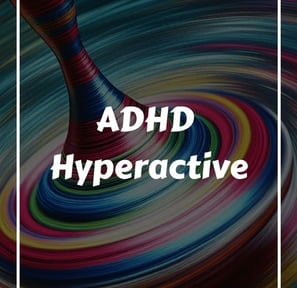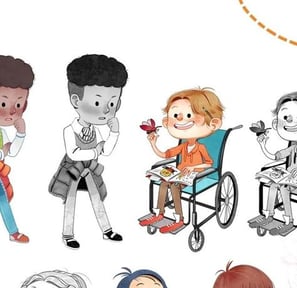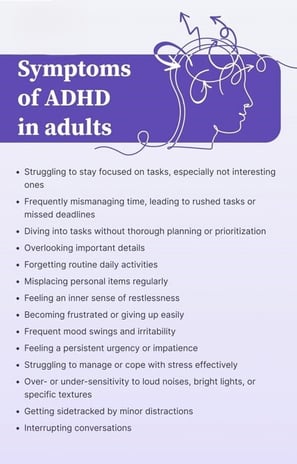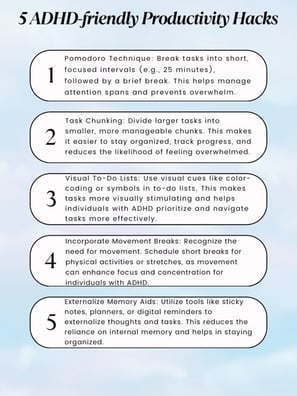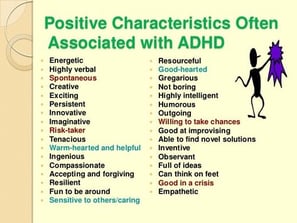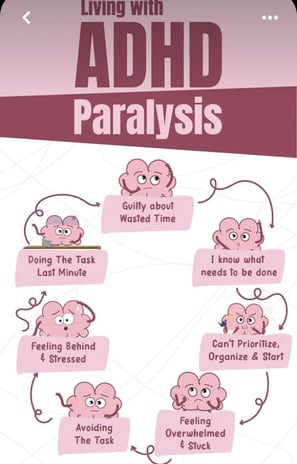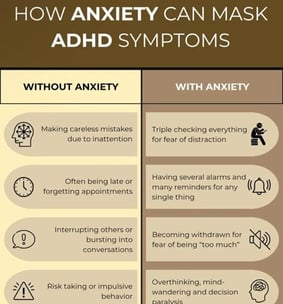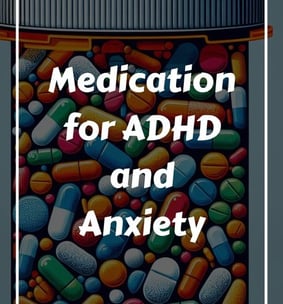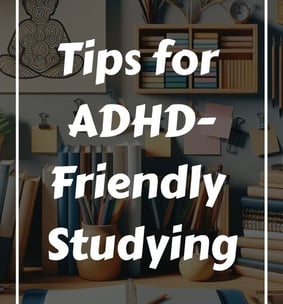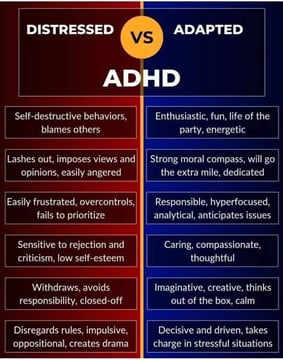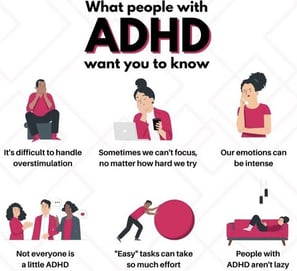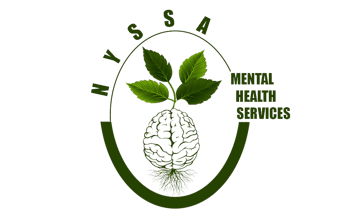Understanding ADHD: Symptoms, Signs, and Diagnosis
ur text here...
ADHD is commonly diagnosed during childhood but often persists into adulthood. While it remains ADHD, the symptoms can manifest differently in children compared to adults. Whether you or your child has attention deficit hyperactivity disorder (ADHD), it can impact various aspects of daily life throughout childhood and into adulthood.
Many symptoms relate to attention and concentration, but the implications of ADHD often extend deeper and are more intricate than that. Moreover, ADHD can present differently for each individual. For instance, one person may seem forgetful, while another struggles with organization or procrastination. Additionally, symptoms can evolve as one ages, and some individuals might experience more severe ADHD symptoms on certain days.
Symptoms of ADHD: Inattention, Hyperactivity, Impulsivity
ADHD symptoms generally emerge at a young age, becoming more apparent when a child begins school. The average age for an ADHD diagnosis is around 7 years old, though some may be diagnosed earlier or later, depending on the severity and type of symptoms. Most adults diagnosed with ADHD likely exhibited symptoms during childhood that went unnoticed or were misdiagnosed.
ADHD encompasses a range of symptoms typically categorized into three main types:
Inattentive
Hyperactive-Impulsive
Combined: a mixture of inattention and hyperactivity-impulsivity symptoms
Symptoms may shift with age as children develop coping strategies. Some individuals may experience fewer or milder symptoms as they grow older, even without formal intervention.
Inattention Symptoms
Many individuals with ADHD continue to experience symptoms related to inattention. According to the Diagnostic and Statistical Manual of Mental Disorders (DSM-5), while males are generally more frequently diagnosed with ADHD, females are more likely to present the inattentive type.
To receive a diagnosis of inattentive type ADHD, one must exhibit six or more of the following symptoms for a duration of six months or longer:
Difficulty paying close attention to details.
Struggles to complete tasks.
Challenges in listening or maintaining focus (often seeming “lost in thought”).
Trouble following instructions.
Difficulty with organization and time management.
Avoidance of tasks requiring significant mental effort.
Frequent misplacement of items.
Easily distracted by external stimuli or internal thoughts.
Forgetfulness.
In children, inattention may manifest as difficulty concentrating on schoolwork and following lessons, or forgetting to complete homework. In adults, it can present as trouble meeting work deadlines, managing bills, or staying organized.
Impulsivity-Hyperactivity Symptoms
Some individuals with ADHD exhibit symptoms primarily related to hyperactivity and impulsivity. Similar to inattention symptoms, one must experience at least six of these symptoms over a six-month period for a diagnosis of hyperactive-impulsive type:
Frequent fidgeting or an intense need to remain active.
Difficulty remaining seated when expected to do so (e.g., in a classroom or workplace).
Restlessness.
Trouble staying quiet when required.
Speaking more often than others or speaking without consideration.
Difficulty waiting for one’s turn.
Tendency to interrupt others or struggle to take turns in conversations.
In children, hyperactivity and impulsivity may appear as getting out of their seat during class or blurting out answers before being called on. In adults, these symptoms might look like restlessness during meetings or interrupting others while they speak.
What Does ADHD Look Like in Kids?
ADHD symptoms are often more pronounced in children, especially in school settings. Children with ADHD frequently experience greater difficulties with focus and may not outgrow these behaviors as quickly as their peers. Symptoms in children may include:
More frequent daydreaming than peers.
Conflicts at school or with friends.
Forgetfulness or a tendency to misplace items.
Taking unnecessary risks, like running into the street without looking.
Difficulty playing quietly.
Squirming or fidgeting.
Challenges in taking turns or being patient.
Running or climbing in unsafe or inappropriate situations.
Children with ADHD are also at a higher risk for co-occurring mental health conditions, such as:
Anxiety
Depression
Bipolar disorder
Learning disabilities
Sleep disorders
Oppositional defiant disorder
Conduct disorder
It is also more common for children with ADHD to have a second neurodevelopmental disorder. As children enter their teenage years, some hyperactive and impulsive symptoms may diminish, while inattention symptoms are more likely to persist into adulthood. However, many adults with ADHD have discovered ways to manage and alleviate these symptoms.
What Does ADHD Look Like in Adults?
ADHD can present differently in adults. For example, hyperactivity in children may manifest as restlessness in adults. Research indicates that adults with ADHD often report a lower quality of life, particularly those with hyperactivity and impulsivity, as well as more severe symptoms.
ADHD symptoms in adults may include:
Restlessness
Impulsive behavior
Difficulty concentrating at work
Challenges with organization at home or work
Issues with follow-through
Trouble prioritizing tasks, planning, and managing time
Anger, irritability, or mood swings
Difficulty multitasking
Problems managing stress
While most individuals are diagnosed during childhood, some do not receive a diagnosis until adulthood. Nevertheless, ADHD does not develop in adulthood; individuals have often experienced symptoms since childhood. Like children, adults with ADHD are also more likely to face specific mental health conditions, including:
Personality disorders
Substance use disorders
Anxiety disorders
Intermittent explosive disorder
Learning disabilities
Obsessive-compulsive disorder (OCD)
Adults with ADHD may also have a higher likelihood of co-occurring neurodevelopmental conditions, such as autism spectrum disorder. Symptoms of ADHD in adults can resemble or be mistaken for other mental health issues like depression and anxiety. Healthcare providers will often inquire about childhood symptoms to help determine whether it is ADHD or another condition.
Those living with ADHD may encounter challenges such as unemployment or financial difficulties that can affect other areas of their lives. However, numerous treatments are available to help manage symptoms and minimize obstacles. While some individuals face more difficulties, others perceive their ADHD as a strength, finding that it enhances their creativity or energy in ways that benefit them throughout their lives.
Should I Get an ADHD Diagnosis?
If you recognize ADHD symptoms in yourself or your child, consider reaching out to a healthcare professional for a screening. If you're unsure where to begin, you can take a screening quiz. Remember, only a qualified healthcare provider can provide a diagnosis, so it's essential to consult one.
To receive an ADHD diagnosis as an adult, you must exhibit symptoms:
Before the age of 12
In at least two different settings: home, work, school, or other activities
That are not attributable to other mental health conditions such as anxiety or depression
That cannot be better explained by an underlying health condition, like a thyroid disorder
You might consult the following professionals for an ADHD diagnosis:
Pediatricians (for children)
Psychologists or neuropsychologists
Psychiatrists
Primary care physicians
In some cases, your doctor may begin with a blood test to eliminate any physical health conditions that may have overlapping symptoms.
What’s Next?
Once a diagnosis is confirmed, you can discuss treatment options and coping strategies that suit your needs. One available option is medication. According to the Centers for Disease Control and Prevention (CDC), stimulant medications alleviate symptoms in 70–80% of children with ADHD. Non-stimulant medications, while slower-acting, may also benefit some individuals.
Behavioral therapy can assist some children in acquiring skills and thriving. Therapy might focus on:
Stress management tools
Social skills development
Organizational skills
Support for school-related challenges
Assistance with concentration and focus
You and a healthcare provider can explore which treatment methods will be most beneficial for you or your child. If you or your child has received an ADHD diagnosis, numerous support groups and resources are available to ease daily life, including:
Children and Adults with Attention-Deficit/Hyperactivity Disorder (CHADD)
Attention Deficit Disorder Association (ADDA)
Impact Parents: Helping Parents Help Kids
ADDitude: Inside the ADHD Mind
Regardless of your age at diagnosis or the symptoms you experience, the right resources and treatments can help you manage your symptoms and thrive every day.
References:
American Psychiatric Association. (2013). Diagnostic and Statistical Manual of Mental Disorders (5th ed.).
Centers for Disease Control and Prevention (CDC). (n.d.). ADHD: What is ADHD?
Tips for Living with ADHD
If you've recently received a diagnosis of attention deficit hyperactivity disorder (ADHD), you may be wondering what steps to take next.
Like many mental health conditions, ADHD carries a significant stigma, but thankfully, perceptions are evolving.
For numerous individuals, managing ADHD involves adopting new strategies that help them cope with symptoms, ultimately enhancing their emotional health, personal relationships, and professional lives.
Here’s a guide to effectively managing your ADHD. We’ll provide tips for daily living, strategies for adhering to treatment plans, and ways to enhance your overall well-being.
Newly Diagnosed? You’re Not Alone
On one hand, you might feel a sense of relief upon discovering that your experiences stem from a medical condition. On the other hand, feelings of fear may arise due to the stigma surrounding ADHD.
Given the vast amount of information available about ADHD, it’s also common to feel overwhelmed.
The good news is that ADHD is manageable, and with proper care, you can effectively control your symptoms.
According to Terry Matlen, MSW, ACSW, a licensed psychotherapist and founder of ADD Consults, your quality of life is likely to improve following your ADHD diagnosis. This is because the diagnosis can guide you toward better symptom management.
Everyone’s experience with ADHD is distinct. There are numerous ways to address symptoms, and what succeeds for one person may not work for another. Finding the right approach may require some experimentation, which is perfectly fine. There are many strategies to explore.
Daily Tips for Living with ADHD
Each individual with ADHD has unique routines and needs, which means they will have different methods for managing their daily lives.
Here are several suggestions to simplify daily management.
Consistently Utilize Organizational and Time Management Tools
ADHD can make it challenging to stay organized and manage time effectively. Find one or more tools that are helpful and easy to use, whether it’s:A paper planner, bullet journal, or notepad
An app like Trello or To-do list for task management
A time-management technique such as using Google Calendar for time blocking
The Pomodoro Technique, which involves working in 25-minute intervals with breaks in between (many productivity apps feature Pomodoro timers, or you can use a simple timer in your browser, like Tomato Timer).
Consistency is essential, so try to stick with one tool for a while before switching to a new one.
Set Reminders for Medication
While not everyone with ADHD uses medication, if you do, taking it consistently is crucial. Keep your medication visible, such as near your coffee maker or bedside table. Setting an alarm on your phone for daily reminders can also help.Gamify Your To-Do List
Transform your tasks into a game to make completion more enjoyable. You can do this by rewarding yourself, aiming to finish a project within a specific timeframe, or simply checking off completed tasks. Physically crossing items off a to-do list can provide a genuine sense of achievement. Tools like Habitica can assist with this.Make Tasks Meaningful
To motivate yourself to complete tasks, it’s important to feel engaged. Reflect on why the task matters. For example, a work project might align with your passion for a larger cause or your goal of saving for a vacation. Keeping your focus on the end goal can enhance motivation.Avoid Multitasking
While some thrive on multitasking, many find it unproductive. Minimize distractions that tempt you to tackle multiple tasks at once. For instance, if you're studying one subject, put away materials for others. If you're cooking, consider putting your phone aside.Limit Screen Time
Excessive screen time can cause you to lose track of time and distract you from other tasks. Consider downloading apps that help you monitor and limit screen time, or set a timer for social media use, allowing short bursts of time before moving on to the next task.
Overcoming Challenges in Treatment
Adhering to a treatment plan can be challenging, as it may require establishing new routines, such as attending therapy sessions and consistently taking medications.
Once you find your rhythm, these practices can become second nature, but it may take some trial and error to achieve this.
Here are some tips for addressing common challenges in ADHD treatment:
Create Calendar Reminders: You may miss therapy appointments due to distractions or forgetfulness. Setting up calendar alerts can help you remember appointments and medication schedules.
Take Notes During Therapy: If you struggle to complete tasks between sessions, jotting down brief notes can be beneficial. Work on specific action items with your therapist to focus on throughout the week.
Discuss Medication Side Effects with Your Doctor: Concerns about potential side effects or addiction related to ADHD medication are common. However, at the appropriate dosage, side effects tend to be mild. Be sure to discuss what to expect with your healthcare provider.
When it comes to medication, keep these guidelines in mind:
Take your medications consistently to ensure their effectiveness.
Always consult your healthcare team before making any dosage adjustments.
Communicate any changes in mood or symptoms to your doctor.
Inform your doctor about other medications you take, including supplements or herbal treatments, as these could interact with ADHD medications.
Avoid alcohol and substance use.
Finding an ADHD Coach
An ADHD coach can play a crucial role in your treatment team, providing strategies and tools to help achieve your goals and navigate challenges.
When selecting a qualified coach, seek professional testimonials (from psychologists or psychiatrists) and inquire about their educational background. Look for relevant degrees, such as psychology or education, which lay a solid foundation for effective coaching.
Other organizations that can assist you in connecting with ADHD coaches in Cameroon include:
Cameroon Dyslexia Association
Belie Health
Psy-Edu
How and When to Disclose an ADHD Diagnosis
If you've just started a new job or received your diagnosis and are still learning how to manage your symptoms, you may wonder whether to inform your employer about your ADHD.
Job applications may include a checkbox for disclosing a disability. ADHD is recognized as a disability in this context. While you have the option to disclose your ADHD upfront, it’s not compulsory.
You are not obligated to share your ADHD diagnosis with any employer, current or future. You can choose what feels most comfortable for you at the moment.
Many individuals opt to disclose their diagnosis when they require specific accommodations at work. However, it's also possible to request accommodations without revealing your diagnosis if you prefer.
If you’re in college or university, consider inquiring about accommodations typically available for students with ADHD.
Unfortunately, ADHD is often stigmatized. One common myth is that individuals with ADHD are less capable of performing their jobs effectively. This is untrue, and it’s important for employers to understand the realities of ADHD.
Moreover, it’s crucial to recognize that discrimination based on an ADHD diagnosis is illegal.
General Tips
In addition to the aforementioned strategies, here are a few general techniques to help manage ADHD:
Get Sufficient Sleep: Poor sleep can exacerbate ADHD symptoms. Consider engaging in relaxing activities to wind down before bedtime. If you find yourself overthinking at night, jot down your thoughts and plans in a notebook to clear your mind.
Engage in Regular Exercise: Physical activity can help release pent-up energy, alleviating hyperactive symptoms. Exercise is also beneficial for enhancing mood, focus, and overall well-being.
Observe Patterns: If you notice that you’re more focused, productive, or feel better in certain situations, take note. For example, if you have a successful study session, consider factors such as a quiet environment, group study, or putting your phone away. Understanding what works best for you is essential.
Seek Support: Don’t hesitate to ask for help from family and friends, or consider hiring an ADHD coach, professional organizer, cleaner, or babysitter if needed.
Celebrate Small Wins: Many individuals with ADHD struggle with self-esteem. To maintain confidence, focus on your achievements and avoid comparing yourself to others. Recognize and celebrate your progress, even the small steps, as they can lead to significant changes.
Show Up: If you find it challenging to focus, your instinct may be to skip commitments. However, attending despite distractions can be a victory worth celebrating.
Prepare for Worst-Case Scenarios: Although unlikely, considering potential problems and planning preventive measures can provide peace of mind. For instance, if you worry about losing your work, keeping copies on multiple devices or printing hard copies can alleviate concerns.
Regularly dedicating time to relaxing activities can also be immensely beneficial. Need some research-backed suggestions?
A 2019 review study found that mindfulness interventions had significant effects in reducing core ADHD symptoms compared to control groups.
Additionally, a 2017 review indicated that spending time in nature could alleviate ADHD symptoms in children, enhancing behavior, attention, memory, and reducing stress.
A simple regular activity could be enjoying a cup of tea in a green space or a cozy corner of your home each morning.
Next Steps
Numerous resources are available for individuals with ADHD. To avoid feeling overwhelmed, consider consuming small portions of information each day, whether through reading, watching, or listening. Taking notes can be helpful.
Here are some valuable ADHD resources to explore:
Written Content for review
ADHD Survival Guide: How I Stopped Procrastinating and Got My Sh!t Together by Sam Dylan
Black Girl, Lost Keys
ADDitude Magazine
Other Resources
How to ADHD . YouTube channel
ADHD Alien. comic series
References
Nigg, J. T., Nikolas, M., & Burt, S. A. (2010). Measured gene-environment interactions in ADHD. Journal of Abnormal Child Psychology, 38(4), 519-527.
Faber Taylor, A., & Kuo, F. E. (2017). Is contact with nature important for human health? The International Journal of Environmental Research and Public Health, 14(2), 205.
ADHD Treatment in Children & Teens
Learning that your child has attention deficit hyperactivity disorder (ADHD) can evoke a wide range of emotions, including anxiety, confusion, overwhelm, and self-blame. As a parent, you might fear that your child will struggle academically, face bullying, or engage in substance abuse. These concerns are common and understandable, but it’s important to recognize that while ADHD presents challenges, there are numerous effective, evidence-based strategies to manage it.
ADHD does not have to dictate your child's identity or future. With the right support, children and teens with ADHD can thrive in various aspects of their lives. Research shows that effective management can lead to significant improvements in academic performance, social relationships, and overall well-being.
Treatment Overview
The most effective treatment for ADHD typically involves a combination of medication and behavior therapy, although there are some exceptions. ADHD is a complex condition, and utilizing both pharmacological and psychosocial interventions maximizes the potential benefits for your child. Medication can help reduce impulsivity and hyperactivity while enhancing focus, which is crucial for academic success and social interactions.
Behavior therapy plays a vital role in reinforcing positive behaviors and minimizing negative ones. In addition to these approaches, school interventions are also critical in helping children with ADHD succeed in their educational environments.
It is essential for parents to take an active role in collaborating with their child's treatment team. As a parent, you are your child’s best advocate, and your involvement can significantly influence the effectiveness of their treatment.
Medication
According to the American Academy of Pediatrics (AAP), medication is not the first-line treatment for children under 6 years old. This is primarily because younger children tend to experience more side effects from ADHD medications compared to older children. If behavior therapy does not yield significant improvements and symptoms remain moderate to severe, a doctor may consider prescribing medication.
When prescribed, the initial medication is often methylphenidate (e.g., Ritalin or Concerta), which belongs to the class of stimulant medications. It is generally recommended to start with the lowest possible dose and gradually increase it until the most effective dose is identified. Additionally, it is advisable for preschoolers to have their medication reassessed after six months to evaluate whether it is still necessary.
For children aged 6 to 11, stimulants are typically the first choice due to their high effectiveness, safety, and rapid onset of action. Research indicates that approximately 70–80% of children with ADHD experience a reduction in symptoms when treated with stimulant medications.
Your child may be prescribed either methylphenidate or another class of stimulants, such as amphetamines. Common examples include Adderall and Dexedrine. These medications usually begin to work within 30 to 45 minutes and can last anywhere from 4 to 12 hours, depending on the specific drug and formulation used.
In addition to oral medications, there are alternative delivery methods like Daytrana, a skin patch that contains methylphenidate. Approved for children aged 6 to 17, it can provide therapeutic effects for up to 12 hours. However, it carries a warning about potential skin discoloration.
Common Side Effects of Stimulants
Stimulant medications can have side effects, including decreased appetite, sleep disturbances, stomachaches, headaches, irritability, and tics. While some side effects, like decreased appetite, may diminish over time, others may require adjustments in dosage or timing of administration. It is crucial to maintain open communication with your child's doctor regarding any side effects experienced during treatment.
Many parents express concerns about the potential for stimulant medications to lead to substance abuse in adolescents with ADHD. However, research indicates that ADHD itself increases the risk for substance use, but effective treatment generally leads to a decrease in such behaviors.
The AAP has noted that there is sufficient evidence supporting the use of non-stimulant medications. These include atomoxetine (Strattera), guanfacine extended release (Intuniv), and clonidine extended release (Kapvay). Non-stimulant medications may be prescribed if stimulants are ineffective, cause unacceptable side effects, or if the child has certain medical conditions.
Side Effects of Non-Stimulants
Non-stimulants typically take longer to exhibit effects, but they can provide longer-lasting benefits, sometimes up to 24 hours. Common side effects of atomoxetine include decreased appetite, stomachaches, dizziness, fatigue, and mood swings. Many of these side effects may improve over time.
For children aged 6 to 12, Intuniv may be prescribed, although sedation is a common side effect. Other potential side effects include nausea, dizziness, and irritability. Meanwhile, Kapvay, primarily used to treat hypertension, can help reduce hyperactivity and anxiety but does not address inattention.
Maintaining consistent communication with your child's healthcare provider is essential, especially if you have concerns about side effects or the effectiveness of the medication. It is important to avoid abruptly stopping any medication without first consulting with a healthcare professional.
Psychosocial Treatment
Psychosocial interventions are crucial for all children with ADHD. These treatments complement medication by teaching valuable skills and strategies that can persist beyond the duration of medication use. For children under 6, behavior therapy is typically the first line of treatment.
Effective Psychosocial Treatments
Several psychosocial treatments have been found to work well for children and teens with ADHD, according to the Society of Clinical Child and Adolescent Psychology.
Behavioral Parent Training (BPT): This program trains parents to reinforce positive behaviors and manage negative ones effectively. Parents learn strategies to closely observe their child’s behavior and increase positive behaviors through praise and reward systems. BPT is especially important because ADHD often co-occurs with oppositional defiant disorder (ODD), which is characterized by frequent tantrums and disobedience. Effective BPT programs include Parent-Child Interaction Therapy (PCIT) and the Incredible Years Parent Program.
Behavioral Classroom Management (BCM): Teachers play a vital role in supporting positive behaviors and enhancing academic engagement. One effective intervention is the daily report card (DRC), where teachers track target behaviors and provide feedback to parents.
Behavioral Peer Interventions (BPI): These interventions involve classmates providing support, such as through group tutoring sessions where students help one another understand the material.
Organizational Skills Training (OST): This training helps children learn how to organize their tasks, manage their time, and use tools like planners and checklists. Parents are actively involved in prompting and rewarding their child’s progress in developing these skills.
Collaborative Problem Solving (CPS): This approach is beneficial for defiant teens and focuses on teaching emotional and behavioral skills. Developed by Dr. Ross W. Greene, CPS involves identifying concerns from both the child and the parent and collaboratively brainstorming solutions.
School Services and Accommodations
Your child may qualify for specific services and accommodations in school under federal laws such as the Individuals with Disabilities Education Act (IDEA) and Section 504 of the Rehabilitation Act. Students eligible for services under IDEA receive an Individualized Education Plan (IEP), which outlines specific goals and the services that will be provided.
Section 504 is a civil rights statute that ensures children with disabilities receive necessary accommodations to succeed in school. This may include provisions such as extended time on tests or the ability to record lessons instead of taking notes.
Tips for Parents
Educate Yourself: Understanding ADHD, including its neurobiological aspects, empowers you to advocate effectively for your child. Organizations like CHADD (Children and Adults with ADHD) offer valuable resources for parents.
Seek Evaluation for Yourself: ADHD often runs in families. If you suspect you may also have ADHD, consider getting assessed by a mental health professional.
Act as a Case Manager: Keep comprehensive records of your child’s academic and treatment history, and serve as a liaison among professionals involved in their care.
Discuss ADHD Openly: Talk to your child about their diagnosis in a positive manner. Emphasize their unique strengths and reassure them that they are not alone in facing these challenges.
Create Structure: Establishing routines and organizational systems at home can help your child manage their responsibilities more effectively.
Observe Learning Preferences: Pay attention to how your child learns best, and adjust their study environment to accommodate their needs.
Communicate Clearly: Give clear, concise instructions and minimize distractions during conversations to help your child focus.
By actively engaging with your child's treatment and educational team, you can help them navigate the challenges of ADHD and foster their success in various aspects of life. Your support and involvement play a crucial role in their journey toward achieving their full potential.
ADHD in Women vs. Men: Does Gender Play a Role in Symptoms?
Attention deficit hyperactivity disorder (ADHD) affects individuals of all gender identities, but the experience of this condition can differ significantly between genders. While ADHD appears to be more prevalent in males, females are often underdiagnosed or misdiagnosed due to variations in symptom presentation. Understanding these gender differences is crucial for recognizing how ADHD manifests in women and girls compared to men and boys.
Prevalence of ADHD in Women vs. Men
Determining whether ADHD is more common in males or females is complex. According to the Centers for Disease Control and Prevention (CDC), approximately 12.9% of men and boys live with ADHD, while the figure is around 5.6% for women and girls. However, these statistics may not fully capture the prevalence of ADHD among women and girls, who might be affected more than these numbers suggest.
Julia Edwards, a licensed mental health counselor and ADHD-certified clinical service provider, emphasizes that ADHD is just as prevalent in girls but is often underdiagnosed due to various factors, including societal expectations and biases in the diagnostic process.
Diagnosis
Boys and men are more likely to be referred for ADHD services than girls and women, even when their symptom profiles are similar. This discrepancy leads to a higher rate of diagnoses among boys and men. Research from 2019 indicates that ADHD diagnoses may be missed more frequently in females during the diagnostic process.
Females are less likely to receive medication or a diagnosis because they often do not exhibit the disruptive external symptoms typically associated with ADHD. Edwards points out that many women and girls are improperly diagnosed with other mental health conditions, such as:
Bipolar disorder
Personality disorders
Depression
Anxiety
For adults seeking a diagnosis, the process can be intricate and must consider comorbidities, trauma, and other medical conditions. Typically, a mental health professional will refer someone for ADHD testing, leading to a comprehensive psychological interview and various cognitive assessments.
Age of Onset
The onset of ADHD symptoms usually occurs before the age of 12, although it can manifest as early as 2 or 3 years old. Edwards notes that boys tend to show symptoms earlier than girls, primarily due to differences in how symptoms present. A 2021 study on adult-onset ADHD suggests that symptoms appearing later in life could be linked to childhood symptoms that went unaddressed.
ADHD is a lifelong neurodevelopmental condition, meaning that individuals do not "grow out of it." However, symptoms can evolve over time, particularly with early diagnosis and proper treatment. Edwards mentions that untreated symptoms often intensify during adolescence due to hormonal changes.
Changes in estrogen levels, for example, can influence the presentation and intensity of ADHD symptoms during various life stages, including:
Puberty
Monthly menstrual cycles
Perimenopause
Menopause
Interestingly, Edwards has observed a significant increase in ADHD diagnoses among women aged 30 to 45, particularly in recent years, likely due to pandemic-related changes in structure and environment. Approximately 90% of her adult ADHD clients are women diagnosed later in life.
Symptoms
ADHD symptoms can vary based on gender, age, and other factors. Edwards believes that while the core symptoms may be similar, the behaviors and manifestations can differ due to structural and functional differences between male and female brains.
ADHD Symptoms in Women and Girls
Women and girls with ADHD are less likely to exhibit external hyperactivity and impulsivity compared to their male counterparts. Instead, they may experience internal hyperactivity, which can manifest as:
Overthinking
Intrusive thoughts
Negative self-talk
Other internalized symptoms may include:
Maladaptive daydreaming
Anxiety
Depression
Spacing out during conversations
Easily losing focus
Auditory processing difficulties
Forgetfulness
Eating disorders
Hypersexuality
Impatience
Body-focused repetitive behaviors (e.g., skin picking, hair pulling, leg bouncing)
Fatigue
Insomnia
Emotional crying, often linked to feelings of guilt and shame
Shyness related to social anxiety and sensory sensitivities
Women and girls with ADHD may also experience symptoms associated with rejection sensitive dysphoria (RSD), which can include:
Perfectionism
People-pleasing tendencies
Codependency
Body dysmorphia or negative body image
Low self-esteem
Overachieving or underachieving
Intense emotional reactions
A Note on RSD
It is important to note that RSD is not formally recognized as a clinical diagnosis in the Diagnostic and Statistical Manual of Mental Disorders, 5th edition (DSM-5). The symptoms associated with RSD are not exclusive to ADHD and may overlap with other mental health conditions.
ADHD Symptoms in Men and Boys
Conversely, boys and men with ADHD are more likely to exhibit external behaviors such as:
Hyperactivity (e.g., fidgeting)
Disruptive behaviors
Frequently losing items
Interrupting others during conversations
Aggressive behaviors
High-risk behaviors (e.g., substance misuse, reckless driving, unhealthy sexual behaviors, excessive spending)
Edwards explains that while RSD can present in men with similar intensity as in women, their emotional responses may often be externalized as:
Anger
Apathy
Self-centeredness
Insensitivity to others’ emotions
Teasing or sarcasm
A strong need to be right or prove others wrong
Defensiveness
Men may also experience emotional dysregulation, which can manifest as temper tantrums or angry outbursts. Edwards highlights that many men are emotionally sensitive; however, societal expectations often lead them to feel shame for expressing their emotions.
Let’s Recap
In summary, individuals of different genders experience ADHD uniquely. Continued research is essential to uncover the nuances of how ADHD impacts men, women, and those across the gender spectrum. Greater understanding can lead to improved education, reduced stigma, and better treatment options for those living with ADHD.
If you are curious about how ADHD symptoms may affect you based on your gender, consider speaking with a therapist. An early diagnosis can prevent future complications, and the ultimate goal—regardless of age or gender—is to enhance the quality of life and enable individuals to express their true selves.
When ADHD and Anxiety Occur Together
ADHD and anxiety are distinct conditions that often coexist, complicating diagnosis and treatment. Research indicates that nearly half of adults with ADHD also have an anxiety disorder. While both conditions share some symptoms, they can also exacerbate one another, making it crucial to develop effective management strategies.
The Connection
ADHD symptoms, such as difficulty focusing and restlessness, can interfere with daily life and obligations. William “Billy” Roberts, a licensed social worker, notes that individuals with ADHD often experience chronic forgetfulness and organizational challenges, leading to increased stress and anxiety.
Does ADHD Worsen Anxiety?
The interplay between ADHD and anxiety can create a cycle where one condition amplifies the other. For example, ADHD-related challenges in decision-making or handling difficult conversations can lead to heightened anxiety levels. Additionally, perfectionism—often associated with anxiety—can exacerbate feelings of inadequacy in individuals with ADHD.
Telling Them Apart
Differentiating between ADHD and anxiety can be challenging due to overlapping symptoms, such as:
Difficulty concentrating
Trouble completing tasks and meeting deadlines
Restlessness
Distraction
Insomnia
However, key distinctions exist. Anxiety is characterized primarily by feelings of nervousness, fear, and worry, while ADHD is defined by inattention, impulsivity, and hyperactivity. Reflecting on when symptoms began can also help clarify the conditions: ADHD typically starts in childhood, whereas anxiety often emerges in adolescence or adulthood.
Treatment for ADHD and Anxiety
Consulting with a healthcare or mental health professional is crucial for developing a comprehensive management plan. This plan should address both ADHD and anxiety, taking into account which condition has a greater impact on daily functioning. A thorough evaluation may also help rule out trauma as a contributing factor to symptoms.
Medication and Therapy
While medication may be prescribed as part of the treatment plan, therapy is often recommended due to potential side effects from medications. Condition-specific psychoeducation can benefit both individuals and their families.
Coping Strategies
Lifestyle changes can also aid in managing both ADHD and anxiety. Roberts suggests that individuals with both conditions can benefit from skills training to address forgetfulness and anxiety management techniques, such as:
Meditation
Yoga
Mindfulness practices
Deep breathing exercises
Nutritional adjustments
Adequate sleep
Regular exercise
So, Now What?
ADHD and anxiety are distinct yet interconnected conditions. The good news is that both are highly manageable. Consulting with a mental health professional can help you differentiate between the two and develop a tailored management plan that aligns with your lifestyle. With the right support, individuals can effectively navigate the complexities of both conditions and improve their overall quality of life.
ADHD Facts & Statistics: What to Know
“ADHD” may often be used casually to describe moments of distraction, but it is a legitimate condition that affects millions of individuals. Understanding the facts and statistics surrounding ADHD can provide valuable insights into its prevalence, symptoms, and treatment options.
We all experience times when we lose focus, drifting from one task to another without completing any of them. However, could this inability to concentrate indicate that you or your child has attention deficit hyperactivity disorder (ADHD)? Since many ADHD symptoms can mimic typical childhood behaviors, distinguishing between ADHD and normal developmental variations can be challenging.
Overview
ADHD is a neurodevelopmental disorder commonly diagnosed in children and adolescents, though it can persist into adulthood. The hallmark symptoms of ADHD include:
Difficulty concentrating or focusing
Challenges in following instructions
Inability to remain still
Trouble completing tasks
Symptoms can vary significantly from person to person. For instance, some children with ADHD may call out answers impulsively, while others might be quieter, lost in daydreams at their desks. It’s important to note that exhibiting one or more of these signs does not automatically mean a diagnosis of ADHD, as other conditions, such as anxiety, can present similar symptoms.
In Cameroon, as in other regions, ADHD manifests in various ways, and symptoms can differ from person to person. A rough estimate indicates that ADHD affects approximately 5-10% of children in many African countries, though local variations exist. Similar to global trends, ADHD in Cameroon may be more commonly diagnosed in boys than in girls, although cultural factors can influence diagnosis rates.
If you are concerned about ADHD, here are some critical facts to consider.
Fast Stats
An estimated 6 million children in the U.S. have been diagnosed with ADHD, according to data from 2016.
ADHD affects three times as many male teens as female teens.
The average age for ADHD diagnosis is 7 years old.
For severe ADHD, the average diagnosis age is 5 years old.
Approximately 69% of U.S. children with ADHD are on medication to manage the condition.
About one-third of children with ADHD retain the diagnosis into adulthood.
Roughly 4% of U.S. adults over the age of 18 have ADHD.
How Common is ADHD?
ADHD is a prevalent childhood disorder. According to a national parent survey conducted in 2016, around 6.1 million (or 9.4%) of U.S. children have received an ADHD diagnosis. This breakdown includes:
388,000 children aged 2 to 5
2.4 million children aged 6 to 11
3.3 million adolescents aged 12 to 17
Among teenagers aged 13 to 18, males (13%) are three times more likely to receive an ADHD diagnosis compared to females (4.2%). ADHD affects children across all racial and ethnic groups, with rates as follows:
16.9% of Black children
14.7% of White children
11.9% of Hispanic children
Children receive ADHD diagnoses at varying ages. Typically, the more severe the symptoms, the earlier the diagnosis occurs:
Severe ADHD: Median age of diagnosis is 5 years.
Moderate ADHD: Median age of diagnosis is 7 years.
Mild ADHD: Median age of diagnosis is 8 years.
Demographic Factors
Several demographic factors can influence the likelihood of a child receiving an ADHD diagnosis.
Household Income
A 2013 study found that children from lower-income households (below 100% of the poverty level) were more likely to be diagnosed with ADHD than those from higher-income households. Among these, Black children (20.2%) were diagnosed more frequently than Hispanic children (14.1%).
Language
The same study indicated that children from homes where English is the primary language are four times more likely to receive an ADHD diagnosis compared to those from households where English is a second language.
Education
Survey data from the Centers for Disease Control and Prevention (CDC) show that children with ADHD diagnoses are more common in households where parents have a high school education or less compared to those with parents who have higher educational attainment.
Age of Birthing Parent
The 2013 study also noted that children born to parents older than 38 years are more likely to receive an ADHD diagnosis than those born to younger parents.
States
Geographic location can also affect ADHD diagnosis rates. Certain states report higher prevalence rates than others. For example, the western U.S. generally has lower ADHD rates, with Nevada recording the lowest at 5.1%. Conversely, Kentucky has the highest rate at 16.6%.
States with the Lowest ADHD Rates
Nevada: 5.1%
Colorado: 6.3%
California: 6.7%
New Mexico: 6.8%
New Jersey: 6.9%
States with the Highest ADHD Rates
Kentucky: 16.6%
Arkansas: 15.1%
Louisiana: 14.2%
Indiana: 14.1%
South Carolina: 13.8%
Symptoms
ADHD symptoms can begin to appear as early as age 3 to 6. The primary symptoms include inattention and hyperactivity or impulsivity. Common symptoms of ADHD in both children and adults include:
Hyperactivity, which may be physical, verbal, and emotional
Fidgeting or restlessness
Disorganization and difficulty prioritizing tasks
Short attention span
Trouble multitasking
Distractibility
Inability to control anger or frustration
Impulsivity or recklessness
Forgetfulness and poor memory
Difficulty waiting for turns
Frequent mood swings
If you want to learn more, you can find a more in-depth look at ADHD symptoms elsewhere.
Diagnosis
According to the CDC, the average age of diagnosis for ADHD is 7 years old. More severe symptoms often lead to earlier diagnoses, with the average age for severe ADHD being 5 years. By 2011, more than 1 in 10 (11%) school-aged children in the U.S. had received an ADHD diagnosis, reflecting an average annual increase of about 5% each year.
ADHD is not limited to children; approximately 4% of U.S. adults aged 18 and older have ADHD, as estimated by the National Institute of Mental Health (NIMH). Similar to children, adult males (5.4%) are more likely to receive an ADHD diagnosis than adult females (3.2%).
Treatment
According to the CDC, about 3 in 4 children in the U.S. diagnosed with ADHD are receiving treatment. Treatment options for ADHD typically include behavioral therapies and prescription medications.
Recommendations
The American Academy of Pediatrics recommends a combination of behavioral therapy and medication for children aged 6 and older. For those under 6, behavioral therapy is advised as the first-line treatment.
By understanding these facts and statistics about ADHD, individuals and families can better navigate the challenges of the condition and seek appropriate support and treatment.
